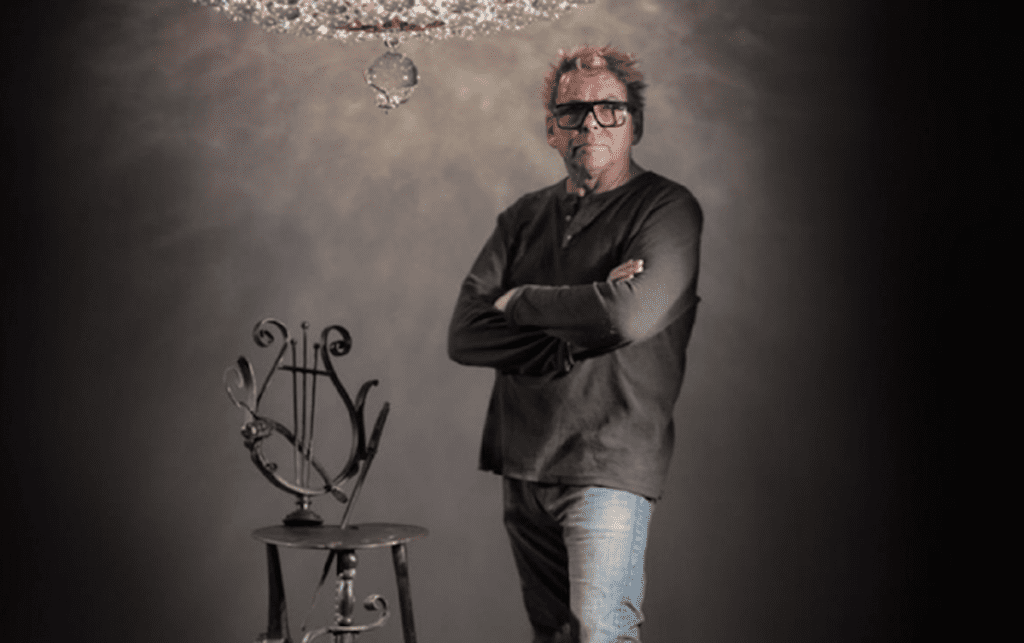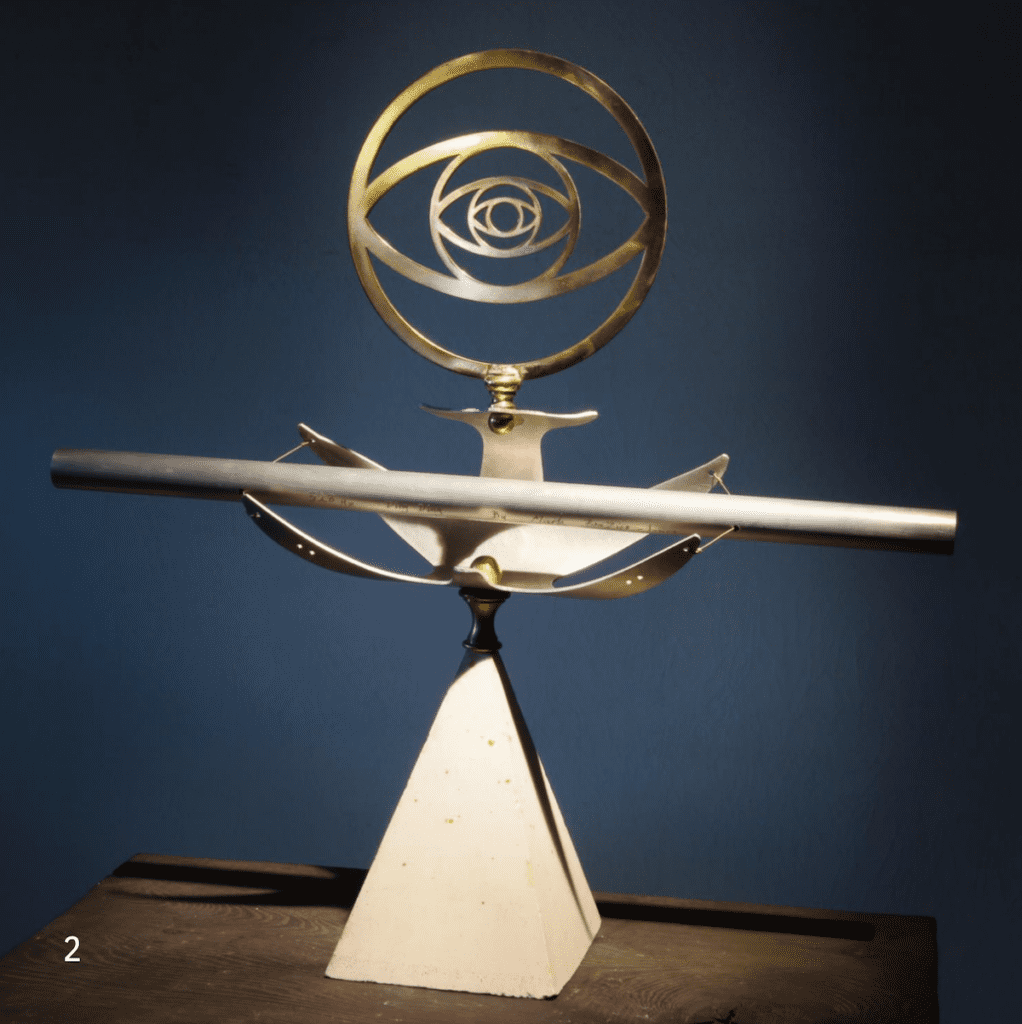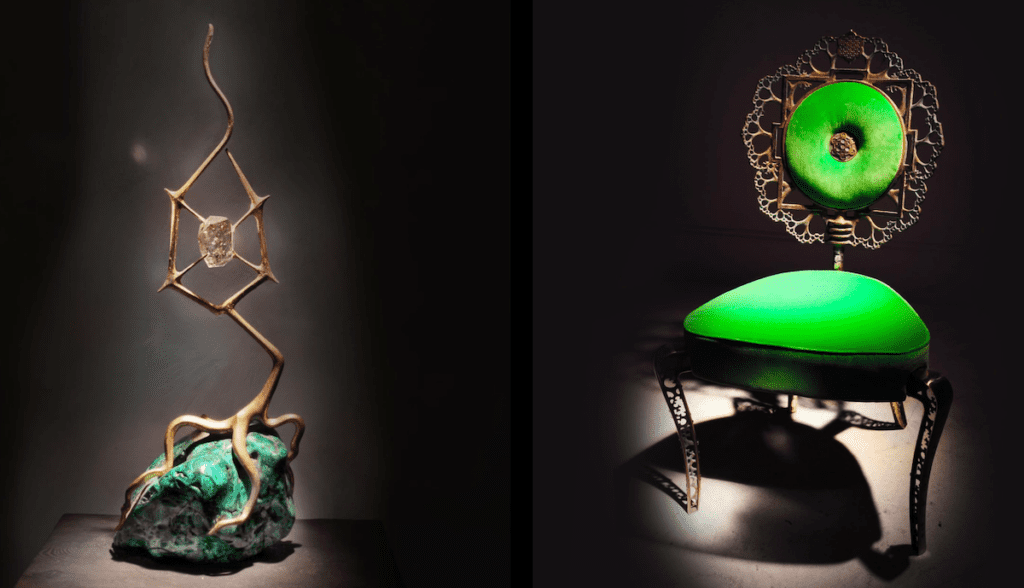This website uses cookies so that we can provide you with the best user experience possible. Cookie information is stored in your browser and performs functions such as recognising you when you return to our website and helping our team to understand which sections of the website you find most interesting and useful.
Interview: Mark Brazier-Jones on his inaugural exhibition, merging art with science, and working with rock royalty
By Shivani Dubey | 5 December 2023 | Arts, Culture, Lifestyle
As Mark Brazier-Jones’ inaugural exhibition opens in London, we chat with the artist about his unique approach to art and working with rock royalty
 Mark Brazier-Jones’ legacy echoes in prestigious museum collections worldwide. From the Victoria & Albert Museum in London to the Museum of Art & Design in New York and the Musée des Arts Décoratifs in Paris, his masterful blend of artistry, science, mathematics and machinery is evident in every piece he creates. So much so, that esteemed collectors around the world, including Madonna, Karl Lagerfeld, Angelina Jolie and Mick Jagger, are interested in his work.
Mark Brazier-Jones’ legacy echoes in prestigious museum collections worldwide. From the Victoria & Albert Museum in London to the Museum of Art & Design in New York and the Musée des Arts Décoratifs in Paris, his masterful blend of artistry, science, mathematics and machinery is evident in every piece he creates. So much so, that esteemed collectors around the world, including Madonna, Karl Lagerfeld, Angelina Jolie and Mick Jagger, are interested in his work.
And now, with his inaugural exhibition Where Do I Begin (which also features art by Mario Velez, Marcus Dove, and Talia Golchin) in full swing at Secteur Privé in Marylebone, London, we spoke with Mark about his collection, the fascinating way he merges art with science, working with rock royalty and more.
What inspired this collection?
My work has always been a vehicle for exploring ancient wisdom and archetypal symbols. This has led me to realise that all religions and temples are a kind of technology that attempt to control or manipulate energy. I decided to apply myself as an artist/scientist to develop machines that might help us either communicate through dimensions or interact with the etheric forces.
I choose to use my subconscious as the primary guide to this explorative science. As an artist and not a scientist I have no need to prove something. It is more important to discover a possibility.
I have always been fascinated by the marriage of art with science, and your collection reflects that very well. Tell me more about that process. How did the idea come about?
The collection consists of domestic artefacts that are both practical and decorative. Their function can range from structuring drinking water to acting as a background focus for meditation.
There are furniture items in my collection which I describe as “power furniture”. The combination of symbolism and sacred geometry impart a talismanic effect upon the surrounding space and inhabitants, even if it is at the very most subtle level. The effect of shape and resonant tones are becoming the focus for science, revealing new discoveries.
Ancient wisdom and modern science seem to be at a convergence point. Now that we move into the realm of quantum physics, words like spirit and consciousness are being used to describe the structure of the cosmos and the atom.
 You used vibrations, sound and mathematics to create the Morphic Resonator for this exhibition. Can you tell me a bit more about the process and the final product? Why is it so special?
You used vibrations, sound and mathematics to create the Morphic Resonator for this exhibition. Can you tell me a bit more about the process and the final product? Why is it so special?
The 528 hertz resonator — we like to call them “Ding Dings” — can be used around the house. I use them for structuring drinking water for the household. Fascinating new science has emerged that shows water is like a tape recorder, it can become molecularly structured by vibrations and even thoughts and emotions. It is vital for health to ensure your drinking water has been structured beneficially.
I also have Ding Dings around the house and in the garden. It is easy whenever passing to simply strike the chime and receive the benefit. It is like a reboot button. Re-centering the self.
At your exhibition, I was instantly drawn to your piece, the Power Chair, and the accompanying jade tables. Is there a reason you chose that green? Why jade?
In my research I have found what I believe to be the central fulcrum to the subject of light, geometry and sound. Human life exists in a narrow band on the electromagnetic spectrum. We live in the world of light. In one direction waveforms become higher and higher. In the other direction vibrations become lower and lower. We live exactly in the middle.
If you split light through a prism we can see a rainbow. Directly in the very centre of the rainbow is a green, a yellow-green. This colour has a sound frequency that is 528 hz. The green is the colour of chlorophyll, creator of life in this world. The sound of 528 hz is the resonant frequency for the structure of human DNA.
I use this green as often as I can. I have created finely tuned chimes that reproduce 528 hz. For this exhibition I devised a number of machines especially for the purpose of transmitting this cosmic nourishment.
You’ve created music video sets for some of the most iconic artists of our lifetimes — David Bowie, Elton John, Duran Duran. How did that time period help you evolve into the artist you are today?
The seven years I spent making pop promo videos for the rock royalty of the 80’s proved to be a tremendous training ground. I learned how to create strong visual effects that would be picked up within the fast editing of the music and I learned a great deal about lighting.
 The artists mentioned in the previous question are very eccentric and unapologetically bold in their work and how they present themselves. Have they inspired your work in any way?
The artists mentioned in the previous question are very eccentric and unapologetically bold in their work and how they present themselves. Have they inspired your work in any way?
I was fortunate to be a teenager in the 70’s. It was Marc Bolan who was the first to show me it was cool to explore different looks and express my uniqueness. Ever since then I have always been happy to be different.
Your approach to art and your work is very unique. You have said that “interior design truly comes alive when darkness falls.” What do you mean by that? And is there a science behind the materials you use to create your art — especially this latest exhibition?
My work takes the form of functional art and is created for the domestic setting. For people to use and interact with. To achieve the ambiance suitable for this magical interaction it has become necessary for me to create a setting. I believe interior design should begin at night and let the daytime look after itself. The ingredients necessary for the enchantment process are age-old; glass, copper, bronze, silver, gold, silk, precious stone, candlelight. It is very difficult to look glamorous in a white room. After all, lighting is nothing without shadow.
Mark Brazier-Jones’ exhibition Where Do I Begin is available to view at 35 Portland Place in Marylebone, London until 22 December.







